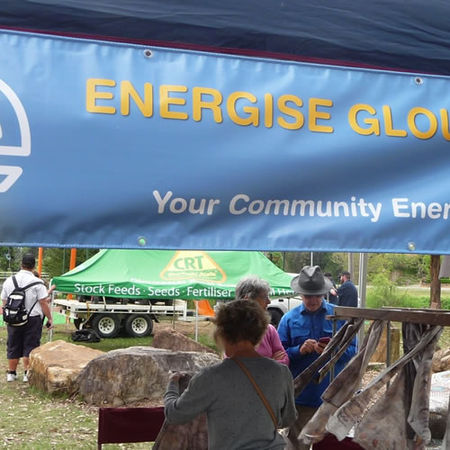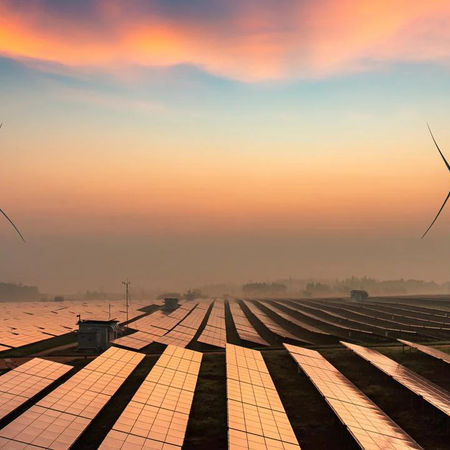
Chairman’s Note
This month many electricity tailers have increased the price they pay to households for solar feed-in tariff. This is because of a recommendation by IPART to the NSW Government.
The recommendations are 11.9 to 15.0 cents per kilowatt-hour for 2017-18. This rate is higher than many of you will currently be receiving and the reasons for this are explained on page 2. It may also be that you are not receiving the best deal from your provider and there is information on how to check this via www. energymadeeasy.gov.au, or directly with your retail supplier.
Electricity packages are constantly changing and as the article says; “it pays to regularly shop around”. It is worth your while to check on your arrangements as discussed in this Newsletter.
Yours with energy,
David Marston (Chairperson)
Saving on Energy Use
Report — Public Information Night
Two very interesting and entertaining speakers: Trish Rasmussen from Z-Net Uralla and James Taylor from Australian Sustainable Timbers, explained how we can use energy more effectively and efficiently at the Public Information Night last Thursday. They also provided us with many challenges; in particular , how we can conserve heat energy in our homes.

Trish shared valuable information about how the project in Uralla is helping 37 households use energy more efficiently and in particular more effectively heating their homes. Many people don’t realise how much heat is actually lost from houses.
This can be due to many factors such as poor insulation in the ceiling and walls; under the house, through floor coverings; air leaks and draughts around doors and windows; limited effectiveness of electric and gas heaters; and heat loss due to poor window coverings. Trish also outlined the other activities undertaken by the Uralla Project. For more information go to www. zneturall.org.au
James gave a very interesting talk on sustainable firewood; the reason why it is needed and how to source it for your home use. Firewood is a valuable product of native forests and so he presented information on how forests need to be managed for overall optimum productivity and long term sustainability.
Sourcing firewood from old paddock trees, road reserves and travelling stock routes is not good for the environment as it removes habitat for many birds animals that require hollows in these trees and logs for shelter and nesting. James recommends that people only use Certified Firewood in their homes. Check with your supplier that the wood meets FSC or AFS standards as this will ensure that the wood has come from a sustainable source.
Project Updates
Neighbourhood Centre Solar PV.
EG is drafting an agreement with the Board of the BWNG and legal agreements for donors and investors to the project. Quotations have been received from local companies for the solar PV system and EG is currently negotiating with a preferred supplier.
Last week you received an invitation to invest in this project by way of donations or interest free loans. We hope that many of you will be able to invest in this first project by EG.
Energy Efficiency Audit.
Energise Gloucester was unsuccessful in its application to Mid Coast Council for funding of the project under their Stronger Communities Program. We are now investigating other funding sources and will keep you informed on progress with this project. The Public meeting on 10 August provided information about how Uralla is undertaking a similar project.
Community Solar Energy Farm
Investigations are continuing on a concept study for a mid-sized solar energy generation project. The intention is for this to be community funded and will provide the Gloucester community with the opportunity to invest in, and buy locally produced green energy at a competitive rate. Ed Robinson is coordinating the pre-feasibility study for this project with Mike Ramsden and if you are interested in joining the Steering Committee please contact Ed on 65581866 or email alcala2422@gmail.com
Solar Feed-in Tariffs for 2017-18
You should be getting 12-15 cents per kWh or more!!
The following information is extracted from the NSW Independent Pricing and Regulatory Tribunal (IPART) review and recommendations on the voluntary benchmark range for solar feed-in tariffs for the year from 1st July 2017.
Electricity retailers do not have to follow these recommendations but customers should use the information to make their choice of provider.
The Government requested that the IPART recommendations for feed-in tariffs should:
- not lead to increased retail electricity prices, and
- support a competitive retail electricity market.
So IPART said that
…...“to meet these requirements, our recommended range for solar feed-in tariffs must be no higher than the financial benefit retailers receive from exported solar electricity. If retailers were to pay feed-in tariffs higher than this benefit, they would make a loss on solar exports. Therefore, they would need to charge higher retail prices to cover this loss. Or they would choose not to supply solar customers, which would reduce competition in the retail market.”
The IPART report presents and explains their final recommendation on the benchmark range, and responds to stakeholder comments on the draft report. Below are sections of that report to help us consider the issues and chose the best retail package for our situation.
The benchmark range is substantially higher than last year
Our [IPART] final recommended benchmark range for solar feed-in tariffs in 2017-18 is 11.9 to 15.0 cents per kilowatt hour (c/kWh). This is substantially higher than last year’s benchmark range of 5.5 to 7.2 c/kWh.
Our [IPART] recommendation reflects the estimated financial benefit retailers would receive from each kWh of solar electricity their customers export to the grid in the ming year. The main financial benefit is the avoided cost of buying this electricity in the wholesale market.
There are also smaller benefits from the associated avoided market fees and avoided electricity line losses. Because the cost of buying electricity in the wholesale market varies at different times of the day, the benchmark range for 2017-18 is based on the financial benefit to retailers:
- in the 2-hour period when the value of solar exports is highest (this ‘peak time’ is 2-4 pm and represents the upper end of the range), and
- at all s except the 2-hour peak period (this ‘off peak time’ represents the lower end of the range).
Like other commodities, the value of solar electricity will rise and fall based on market conditions. The main reason the recommended benchmark range is higher than last year is because forecast wholesale market prices for electricity have risen substantially.
There is a much tighter supply/demand balance in the wholesale electricity market, with both an upturn in demand and the recent retirement of major electricity generators, including the Northern Power Station in South Australia and the Hazelwood Power Station in Victoria.”
Review your plan
We [IPART] recommend that all customers, including solar customers, regularly shop around for a better deal. The Australian Government’s Energy Made Easy website (www.energymadeeasy.gov.au) is a good place to compare offers.
Customers need to consider all aspects of an electricity offer, not just whether it includes a solar feed-in tariff and the amount of this tariff. In fact, analysis we did last year showed that the offer with the highest feed-in tariff is unlikely to provide the best overall electricity deal.
For most solar customers, the most important aspect to consider when comparing offers is likely to be the price each retailer will charge for electricity. This price typically includes a daily supply charge and per kilowatt hour (kWh) usage charges. There might also be exit fees and/or upfront fees that customers need to take into account
Do you know the Answer?

A solar cell converts
A: heat energy into electrical energy
B: solar energy into electrical energy
C: heat energy into light energy
D: solar energy into light energy
Be the first person to send the correct answer by email to the editor@energisegloucester.org and receive a complimentary coffee at The Fox Den.
The answer to last month’s question was:
C. NOT A CONSTANT SUPPLY
The first person in with the correct answer was:
CLAIRE REYNOLDS






